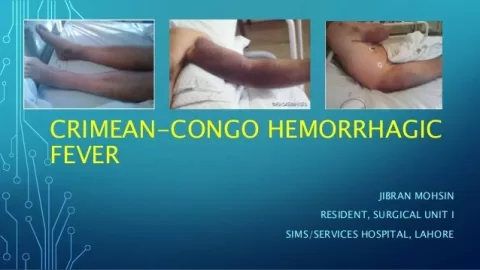Understanding Arthroscopy is essential for anyone looking to comprehend the advancements in orthopedic surgery today. This innovative minimally invasive surgical procedure allows surgeons to diagnose and treat joint issues with remarkable precision using an arthroscope. By examining key joints, such as the knee and shoulder, arthroscopy minimizes trauma and promotes faster recovery times compared to traditional surgeries. Moreover, this technique has gained traction in recent years, especially with the rising popularity of knee arthroscopy recovery programs that emphasize structured rehabilitation. As we explore the intricacies of the arthroscopy procedure, we will also contrast it with arthroplasty, highlighting the significant differences in approach and recovery.
In the realm of joint surgery, terms like joint inspection and minimally invasive intervention frequently surface, especially when discussing arthroscopic techniques. This cutting-edge method allows for detailed visualization and treatment of joint disorders through small incisions, enhancing patient outcomes significantly. The rise of arthroscopy devices in the medical market is a testament to its growing relevance, as healthcare professionals seek effective solutions for joint ailments. As we compare arthroscopy vs arthroplasty, it becomes clear that while both aim to address joint issues, their methodologies and recovery implications differ greatly. Understanding these distinctions is key to making informed decisions about treatment options.
Understanding Arthroscopy: Definition and Importance
Arthroscopy is a minimally invasive surgical technique that utilizes an arthroscope, a slender tube with a camera and light, to visualize the interior of a joint. This procedure enables surgeons to diagnose and treat various joint disorders with minimal disruption to the surrounding tissues. Unlike traditional open surgery, arthroscopy requires only small incisions, significantly reducing recovery time and postoperative pain. Such advantages have made arthroscopy a preferred choice for many patients suffering from joint issues, particularly in the knee, shoulder, and hip.
The importance of understanding arthroscopy lies not only in its definition but also in its implications for patient outcomes. With arthroscopy, surgeons can address conditions ranging from torn cartilage to ligament repairs without the extensive recovery associated with more invasive procedures. This has transformed the approach to joint surgery, allowing many patients to return to their daily activities and sports much sooner. Moreover, as technology advances, the precision and effectiveness of arthroscopic procedures continue to improve, further solidifying its role in modern orthopedic treatment.
Knee Arthroscopy Recovery: What to Expect
Recovery from knee arthroscopy is a crucial aspect of the overall treatment process. After the surgery, patients typically experience some swelling and discomfort, which is normal. It is essential to rest and elevate the affected leg to minimize swelling. Initial recovery may involve using crutches to assist in walking, and patients should follow their surgeon’s guidelines regarding weight-bearing activities. Engaging in physical therapy is highly recommended to strengthen the knee and restore its full range of motion.
The timeline for knee arthroscopy recovery varies among individuals, depending on the complexity of the procedure performed and the patient’s overall health. Generally, patients can expect to resume light activities within a few weeks, while a full return to sports or strenuous activities may take several months. Adhering to a structured rehabilitation program is vital, as it not only aids in recovery but also helps prevent future injuries. Many patients find that with proper care and guidance, they can achieve optimal recovery and return to their pre-injury levels of activity.
Recent Innovations in Arthroscopic Techniques
Recent innovations in arthroscopic techniques have further enhanced the effectiveness of this minimally invasive surgery. Advancements in arthroscopic devices have introduced improved imaging capabilities, allowing surgeons to visualize joints with greater clarity. New tools and techniques, such as 3D imaging and robotic-assisted arthroscopy, are paving the way for more precise interventions. These developments not only enhance surgical outcomes but also reduce the risks associated with joint surgery.
Moreover, ongoing research continues to explore the potential applications of arthroscopy beyond traditional uses. For instance, studies are investigating the role of arthroscopy in treating complex joint conditions previously managed through more invasive surgeries. As the field evolves, the integration of new technologies and techniques will likely expand the scope of arthroscopy, making it an even more valuable option for patients suffering from joint issues.
Comparing Arthroscopy and Arthroplasty
When evaluating treatment options for joint issues, it is important to understand the distinction between arthroscopy and arthroplasty. Arthroscopy is characterized as a minimally invasive procedure aimed at repairing or diagnosing joint problems, while arthroplasty involves the reconstruction or replacement of a damaged joint. Typically, arthroscopy is preferred in cases where joint preservation is possible, allowing patients to maintain more natural joint function.
In contrast, arthroplasty is often reserved for patients with significant joint degeneration or damage, where repair is no longer feasible. The choice between the two procedures depends on various factors, including the extent of joint damage, the patient’s age, and their activity level. Understanding these differences is crucial for patients when discussing treatment options with their healthcare providers, as it can significantly impact their recovery and long-term joint health.
The Growing Market for Arthroscopy Devices
The global market for arthroscopy devices is experiencing significant growth, driven by the increasing demand for minimally invasive surgical procedures. As more patients seek alternatives to traditional open surgeries, the need for advanced arthroscopic tools and technologies is on the rise. Market projections indicate that the arthroscopy devices market could reach approximately $56.75 billion by 2034, highlighting the growing importance of this field in orthopedic surgery.
This growth can be attributed to several factors, including advancements in surgical techniques, increasing awareness of the benefits of minimally invasive procedures, and a rise in sports-related injuries that require surgical intervention. As the market expands, innovations in arthroscopy devices will likely continue to enhance surgical outcomes, making arthroscopy an increasingly viable option for patients seeking effective solutions for their joint problems.
Frequently Asked Questions
What is the arthroscopy procedure and how does it work?
The arthroscopy procedure is a minimally invasive surgical technique that uses an arthroscope, a specialized fiber-optic camera, to visualize, diagnose, and treat joint issues. It involves small incisions through which the arthroscope is inserted, allowing surgeons to perform interventions with greater precision and reduced recovery times compared to traditional surgeries.
How does knee arthroscopy recovery differ from traditional surgery recovery?
Knee arthroscopy recovery is typically faster than recovery from traditional open knee surgery due to the minimally invasive nature of the procedure. Patients generally experience less pain, swelling, and a quicker return to daily activities. Engaging in physical therapy post-surgery is crucial for optimal recovery and restoring joint function.
What are the differences between arthroscopy and arthroplasty?
Arthroscopy and arthroplasty are both surgical procedures aimed at treating joint problems but differ significantly in approach. Arthroscopy is a minimally invasive technique focused on repairing and diagnosing joint conditions, while arthroplasty involves the replacement or reconstruction of a damaged joint, often used for severe joint degeneration.
What is the current state of the arthroscopy devices market?
The arthroscopy devices market is experiencing significant growth, projected to reach approximately $56.75 billion by 2034. This increase is driven by advancements in minimally invasive surgical techniques and the rising demand for arthroscopic procedures, highlighting the evolving landscape of orthopedic surgery.
What are essential recovery tips after undergoing an arthroscopy procedure?
Essential recovery tips following an arthroscopy procedure include resting and elevating the affected area to reduce swelling, effectively managing pain with prescribed medications, and participating in physical therapy to strengthen the joint and restore movement. Following a structured rehabilitation plan is key to a successful recovery.
| Key Points | Details |
|---|---|
| Definition of Arthroscopy | A minimally invasive surgical procedure to visualize and treat joint issues using an arthroscope. |
| Advantages | Less trauma to the body, faster recovery times compared to traditional surgeries. |
| Types of Procedures | Commonly performed on joints such as the knee, shoulder, and hip, with applications for complex joint pathologies. |
| Recovery Insights | Structured rehabilitation and physical therapy are crucial for optimal recovery, especially post-knee arthroscopy. |
| Market Growth | The global arthroscopy devices market is projected to reach approximately $56.75 billion by 2034. |
| Comparison with Arthroplasty | Arthroscopy is less invasive and focuses on joint repair, while arthroplasty involves joint replacement or repair. |
Summary
Understanding Arthroscopy is essential for anyone looking to grasp the intricacies of modern orthopedic surgery. This minimally invasive technique offers significant advantages, such as reduced recovery times and less trauma during procedures. As advancements in technology continue to enhance arthroscopic techniques, it’s crucial for patients and healthcare providers alike to stay informed about the latest developments, recovery protocols, and the differences between arthroscopy and other surgical options. Engaging with a qualified orthopedic specialist can provide valuable insights and treatment options for various joint-related issues.
The content provided on this blog (e.g., symptom descriptions, health tips, or general advice) is for informational purposes only and is not a substitute for professional medical advice, diagnosis, or treatment. Always seek the guidance of your physician or other qualified healthcare provider with any questions you may have regarding a medical condition. Never disregard professional medical advice or delay seeking it because of something you have read on this website. If you believe you may have a medical emergency, call your doctor or emergency services immediately. Reliance on any information provided by this blog is solely at your own risk.








